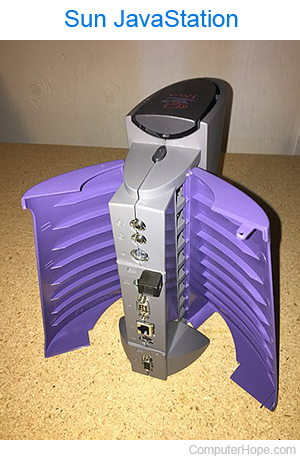JavaStation

Developed by Sun Microsystems, the JavaStation was a network computer that began shipping in March 1998. It was designed to be a thin client that relied on network connectivity to access applications and resources.
The intention of the JavaStation (which ran Java applications) was to offload processing tasks to servers, thus reducing the need for powerful desktop hardware. Users could access their applications and data from the JavaStation, which acted as a terminal, relying on a server for most of the computing power. It did not have components like a hard drive, floppy diskette slot, or CD-ROM (compact disc read-only memory) drive, which were all common in desktop computers of the era. However, it did utilize PS/2 ports for the mouse and keyboard, and VGA (video graphics array) for monitor input.
The JavaStation didn't achieve widespread success, as desktop PCs began to come down in price and include web browsers as the 1990s progressed. The concept of thin clients and network computing persisted in various forms, but the specific JavaStation hardware was eventually phased out by Sun.
CamelCase, Hardware terms, Input, Java, Obsolete, Processing
